In just over two weeks, Christians everywhere will celebrate the anniversary of the foundational moment of our faith: the resurrection of Jesus Christ. Paul emphasized this as a primary point in his letter to the Corinthians (1 Cor. 15:3,4), and each of the gospel accounts record the event with various details. It is because of these various details that skeptics have claimed the New Testament cannot even report the resurrection of Jesus without contradicting itself. In his book Farewell to God, Charles Templeton summarized a comparison of the four Gospels by saying, “The entire resurrection story is not credible.” (1996, p. 122). This is a claim that requires some investigation. Is it true that the Gospel authors cannot even report on the central event in the Christian faith without contradicting one another? Let’s look into it.
Below I’ve compiled a table which breaks down some oft-cited differences in each of the Gospel accounts of the resurrection. Before moving forward, read through each section of scripture and review my brief summaries of key details.
We would do well to recall what makes a contradiction in order to determine of these details meet the demands. The law of non-contradiction states that a thing cannot be both true and not true at the same time and in the same way. We should also remember that if these Gospels are what they claim to be - reports of eye-witness testimony - then we also need to take into consideration a variety of perspectives. For example, you and I could both witness an auto accident, but if I view the front of the vehicle and you view the rear we might each leave out some details. You might not mention that the right front of the vehicle hit a fire-hydrant, while I might not mention that the rear wheels braking left a 15-foot long skid mark. And neither of us contradict one another in only mentioning a part of the events. What we’ve done is give supplemental information, and that is important to remember when going through some of these details.
Who Came to the Tomb?
Mary Magdalene appears to be the only constant to this detail of the story. Matthew says “the other Mary” was there, Mark includes Salome, Luke includes Joanna, and John says only Mary Magdalene was there? So we have a clear contradiction, right? The problem is, none of these accounts say “only” the women they listed were present. Luke even broadens the possible total number when he says “the other women with them” in verse 10. So the synoptic Gospels are list a number of women, while not eliminating the possibility of additional women being present. But John, he only lists Mary Magdalene. Surely there is a problem there, right? At the start, it is curious that John only lists Mary Magdalene, until we get to John 20:2. Mary finds the tomb empty, runs to Peter and (presumably) John, and says the following, “They have taken away the Lord out of the tomb, and we do not know where they have laid Him.”. Firstly we note that Mary believes someone, “they”, took Jesus’ body. But look what else she says; “WE do not know where they have laid Him.” In reporting the words of Mary, John reveals that there were others with Mary.
So this ends up being a perfect example of the law of non-contradiction in play. We do not have one Gospel writer saying that ONLY Mary Magdalene was there, while others say that many were there. Rather, we have each account acting as a supplement to the other.
When Did They Come, and Why?
The gospels are in pretty good agreement on the reason the women came to the tomb that Sunday morning; to anoint the body of Christ with spices. This was a common burial practice in Jewish culture. Since they could not prepare his body with such things due to Sabbath day restrictions, they had to do it first thing Sunday morning before the body began to smell. Regarding the time of day, we have some pretty general statements. All accounts indicate that it was early on the first day of the week. Matthew says it was as the day began to dawn. Mark, Luke and John all say “early”. The difficulty comes when we see John say that it was still dark, yet Mark say that the sun had risen. Now, any reasonable person who has been up to witness a sunrise can surely understand how some may refer to that time of day as “still dark”. Particularly if it were cloudy, or if the location were under moderate tree coverage, not to mention the subjective nature of the word “dark”. So these terms in reference to the same approximate time of day are not mutually exclusive, but if you’re looking for issues then this might be one you key on. If that is the case, allow me to offer another possible explanation.
Earlier in the week some of the disciples lodged at Bethany, two miles from Jerusalem. It’s possible that the women were staying there for the Sabbath, and when John says it was “still dark”, he’s referring to the time they left Bethany and “went to the tomb”. Most people walk about 3 miles per hour, which would put their travel time somewhere around 40 minutes to get to the tomb. That’s more than enough time to go from “still dark” (Jn. 20:1) to “when the sun had risen” (Mk. 16:2). While neither of these explanations may be satisfactory to the skeptic, they are at the very least reasonable explanations to this apparent discrepancy.
What Did They Find?
The issue with this question is centrally dealing with whether the stone was rolled away from the tomb when the women arrived. Notice that all but one account are in definite agreement. Mark, Luke, and John all say the stone had been moved when the women arrived. It is only Matthew who reports, or appears to report, that the stone was moved as the women were there. So let’s take a careful reading of the verses in question.
Now after the Sabbath, as it began to dawn toward the first day of the week, Mary Magdalene and the other Mary came to look at the grave. And behold, a severe earthquake had occurred, for an angel of the Lord descended from heaven and came and rolled away the stone and sat upon it. And his appearance was like lightning, and his clothing as white as snow. The guards shook for fear of him and became like dead men. (Mt. 28:1-4)
Now here’s the important question: Did the events described in verse 2 happen before the women got there, or after they got there? Read it again carefully and I think you’ll agree that it isn’t entirely clear. If we might lean in one direction or another, I think we would have to say that it had already happened. Verse 2 says, “behold, a severe earthquake HAD occurred…”. It isn’t definitive, but the use of the past tense would seem to indicate that this had already happened when the women arrived. So at worst Matthew’s account in inconclusive, but at best it aligns perfectly with the rest of the Gospels and simply gives more information as to how the stone was moved.
Who Else was There?
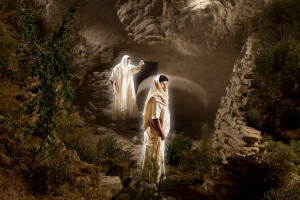 Remember the conclusion we drew from asking who came to the tomb? None of the accounts claimed they were relaying exclusive information. There was room for supplemental information and that’s what we find each account doing – supplementing one another. The same is the case when asking who else was at the tomb. Specifically, when this is listed as a contradiction it is usually in the sense of how many angels were present. Luke and John say two, Matthew says one, and Mark is somewhat inconclusive. Mark says a “young man clothed in a long white robe” was inside the tomb, but never specifies that this was an angel. The long white robe might be an indicator, since that’s also how Matthew and John describe the clothing of the angels. So it’s entirely possible, and it wouldn’t be the first time an angel is referred to as simply a man in scripture.
Remember the conclusion we drew from asking who came to the tomb? None of the accounts claimed they were relaying exclusive information. There was room for supplemental information and that’s what we find each account doing – supplementing one another. The same is the case when asking who else was at the tomb. Specifically, when this is listed as a contradiction it is usually in the sense of how many angels were present. Luke and John say two, Matthew says one, and Mark is somewhat inconclusive. Mark says a “young man clothed in a long white robe” was inside the tomb, but never specifies that this was an angel. The long white robe might be an indicator, since that’s also how Matthew and John describe the clothing of the angels. So it’s entirely possible, and it wouldn’t be the first time an angel is referred to as simply a man in scripture.
As for the number of angels, the differences between Matthew and Luke/John are not contradictions. Remember, to be a contradiction a thing must be reported as true and not true at the same time and in the same way. Matthew doesn’t say there was only one angel there. And after all, if there are two angels present then it is also accurate to say there is one angel present. Eye-witness accounts inherently contain these type of differences that are not contradictory, but instead reveal a specific emphasis or perspective of the witness.
Who Did They Tell?
This is another area where we have a large degree of agreement between the Gospels. To varying degrees, the Gospels each report that the disciples were told. Or at least it was the intent to tell the disciples, which is all Matthew reveals. Mark, Luke and John all give a variety of details on this matter. Maybe it was just Mary Magdalene, maybe all eleven disciples were told, maybe all the women reported the event, maybe Peter and John were the first to know. These are all details that, while they appear to be telling different stories, can all be reconciled with a larger picture of the day in question. That is what we’ll do in the following section.
What About Jesus?
Another topic of debate with the resurrection story is whether the women saw Jesus. The simple answer, as the above table shows, is yes. But admittedly, that is a bit reductive. Here’s a more detailed rundown.
- Matthew reports that all the women encountered Jesus as they went to tell the disciples.
- Mark says in verse 9 that he first appeared to Mary Magdalene. But notice, verses 9 to 20 take a different format than the previous 8 verses. They are laid out it a much more summarized way, making general statements and moving on to the next event. It’s possible, and even likely, that this section of Mark is not intended to give details and shouldn’t be relied upon to pick apart in the fashion we are doing here.
- Luke does not specify an encounter between Jesus and any of the women that visited the tomb. This of course does not mean one didn’t happen. He instead goes from the women reporting their findings to the disciples to Jesus visiting two traveling on their way to Emmaus (Lk. 24:13-35). The details of that story would indicate these were two male disciples.
- It is John’s Gospel which contains the largest differences. John describes the women (of which Mary Magdalene is the only one named) approaching the tomb and finding the stone rolled away. Then running immediately to Peter and John, which prompted them to visit the tomb as well. After they witnessed the empty tomb and left, Mary Magdalene remained (possible with the rest of the women) and witnessed two angels inside the tomb, then Jesus himself at the site of the tomb.
Without John’s account we have virtually no problems in aligning the details. Partly because there aren’t many details between Matthew, Mark and Luke. John gives an incredible amount of detail by comparison, and for good reason. You may recall that John was the only apostle present at the crucifixion, which probably indicates he was around when Jesus was buried and remained close to Mary Magdalene afterwards. John’s account is very likely a description from Mary Magdalene herself, which would explain the apparent discrepancies to accounts which probably did not have her direct testimony, but only the testimony of others.
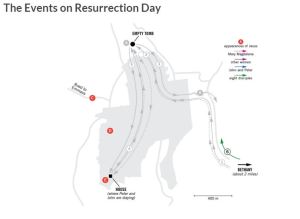 The folks at ‘Answers in Genesis’ have done a lot of work to piece together the details of John’s account in light of the other Gospel writers. It is a bit lengthy, so I won’t be detailing it all here, but please visit their article Christ’s Resurrection – Four Accounts, One Reality by Tim Chaffey. Here is a bullet-point list of how he believes it went down, taking all accounts into consideration, including that of Paul’s summary in 1 Corinthians 15…
The folks at ‘Answers in Genesis’ have done a lot of work to piece together the details of John’s account in light of the other Gospel writers. It is a bit lengthy, so I won’t be detailing it all here, but please visit their article Christ’s Resurrection – Four Accounts, One Reality by Tim Chaffey. Here is a bullet-point list of how he believes it went down, taking all accounts into consideration, including that of Paul’s summary in 1 Corinthians 15…
- Mary Magdalene & the other women travel from Bethany to Jesus’ tomb.
- Nearing the tomb, they notice the stone is rolled away. Mary runs to tell Peter and John while the rest of the women continued to the tomb.
- With no corpse to place spices on, the other women then return to Bethany, stopping first in the city to report their findings to Clopas and other disciples.
- Mary Magdalene returns to Jesus’ tomb with Peter and John.
- Peter and John return to the house after seeing the empty tomb. Mary stays behind where she sees Jesus. Shortly afterward Jesus appears to the other women as they’re headed back to Bethany.
- The women report to 8 of the disciples at Bethany, and they travel to meet up with Peter and John. Jesus appears to Clopas and his companion on the road to Emmaus. Jesus appears to Peter (perhaps prior to the Emmaus appearance). Jesus appears to John, Peter, and the eight disciples. This totals ten because Thomas is not there, he comes later and does not believe, hence the moniker “doubting Thomas”.
Now What?
By now the skeptic may be tossing up their hands, thinking it ridiculous that so much needs to be done to reconcile all the accounts. They may even think that because so much work has to be done to clear things up, that must mean that none of the stories are reliable or believable. An attitude like this conveys a foundational misunderstanding of eye-witness testimony, as well as an unprecedented standard by which to judge ancient history. I think if one were honest, one would admit that nailing down details of a single moment of single day in the history of their own life in which many people were involved would be a difficult talk. Especially if you’re trying to align four or five accounts of said moment. If you ask my wife and I to describe our wedding, you’re going to get a lot of different details from both of us. It will take some work for someone who wasn’t there to piece together the events of that day, and that was just over nine years ago.
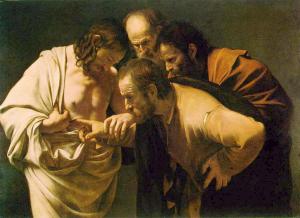 With the resurrection, skeptics are asking to nail down unprecedentedly precise details of an event nearly 2,000 years ago, which we have at least four accounts of which give different details of the event. It’s going to take some work. Considering the witness evidence we have and the standard at which we judge historical accuracy, I think the resurrection of Jesus Christ is one of the single greatest attested events in history. We’ve combed through each account and given possible, if not entirely reasonable explanations for how to align all the evidence. But notice what we never had to compare: We never examined differences in whether Jesus died, or whether the tomb was empty, or whether he appeared to anyone alive after his death. That’s because every account agrees on those major items. Just as my wife and I giving different details of our wedding day would not mean the ceremony didn’t happen, finding different details of the resurrection story does not mean the resurrection didn’t happen. By all accounts, it most certainly did. The question now is, what will you do with that reality?
With the resurrection, skeptics are asking to nail down unprecedentedly precise details of an event nearly 2,000 years ago, which we have at least four accounts of which give different details of the event. It’s going to take some work. Considering the witness evidence we have and the standard at which we judge historical accuracy, I think the resurrection of Jesus Christ is one of the single greatest attested events in history. We’ve combed through each account and given possible, if not entirely reasonable explanations for how to align all the evidence. But notice what we never had to compare: We never examined differences in whether Jesus died, or whether the tomb was empty, or whether he appeared to anyone alive after his death. That’s because every account agrees on those major items. Just as my wife and I giving different details of our wedding day would not mean the ceremony didn’t happen, finding different details of the resurrection story does not mean the resurrection didn’t happen. By all accounts, it most certainly did. The question now is, what will you do with that reality?

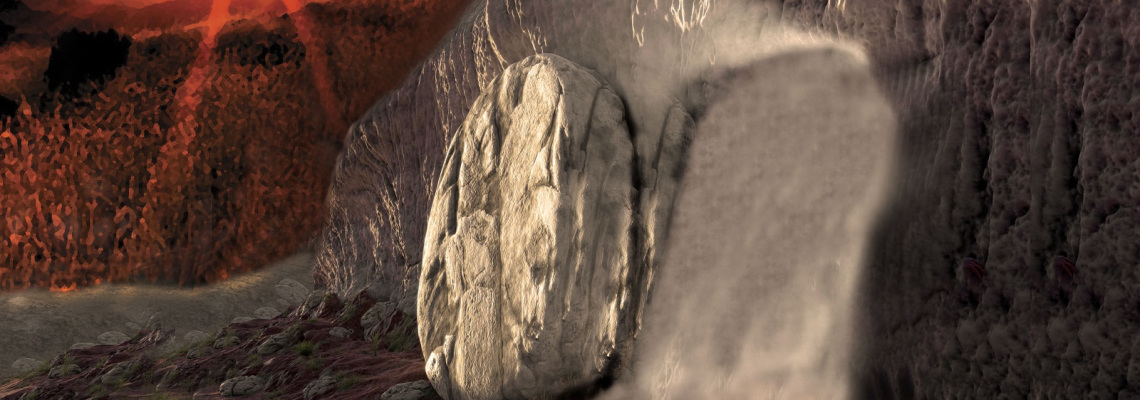

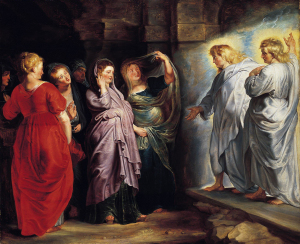


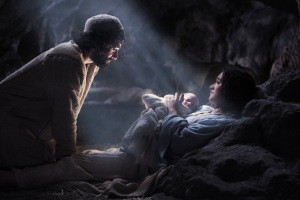 The Christmas season is here, and with it the remembrance of Jesus’ birth and His redemptive purposes for mankind. This is the time of year where we Christians celebrate the moment God took on flesh in order to redeem His people. This is why the angels declared “Glory to God in the highest, and on earth peace among men with whom He is pleased” (Luke 2:14). For some non-believers this is the time of year to cry foul on Jesus’ birth narrative. They say the story was really borrowed from previous myths. Specifically, certain elements of the story, like God becoming flesh, being born of a virgin, a star in the east marking the occasion, etc., were taken from the origin stories of the likes of Horus or Mithra(s). A well-known internet film called “Zeitgeist” is probably to blame for these current claims.
The Christmas season is here, and with it the remembrance of Jesus’ birth and His redemptive purposes for mankind. This is the time of year where we Christians celebrate the moment God took on flesh in order to redeem His people. This is why the angels declared “Glory to God in the highest, and on earth peace among men with whom He is pleased” (Luke 2:14). For some non-believers this is the time of year to cry foul on Jesus’ birth narrative. They say the story was really borrowed from previous myths. Specifically, certain elements of the story, like God becoming flesh, being born of a virgin, a star in the east marking the occasion, etc., were taken from the origin stories of the likes of Horus or Mithra(s). A well-known internet film called “Zeitgeist” is probably to blame for these current claims.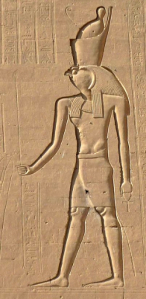 Horus: According to the “Zeitgeist” film, “Horus was born on December 25th of the virgin Isis-Meri. His birth was accompanied by a star in the east, which in turn, three kings followed to locate and adorn the new-born savior. At the age of 12, he was a prodigal child teacher, and at the age of 30 he was baptized by a figure known as Anup and thus began his ministry. Horus had 12 disciples he traveled about with performing miracles such as healing the sick and walking on water… After being betrayed by Typhon, Horus was crucified, buried for 3 days, and thus resurrected.”
Horus: According to the “Zeitgeist” film, “Horus was born on December 25th of the virgin Isis-Meri. His birth was accompanied by a star in the east, which in turn, three kings followed to locate and adorn the new-born savior. At the age of 12, he was a prodigal child teacher, and at the age of 30 he was baptized by a figure known as Anup and thus began his ministry. Horus had 12 disciples he traveled about with performing miracles such as healing the sick and walking on water… After being betrayed by Typhon, Horus was crucified, buried for 3 days, and thus resurrected.”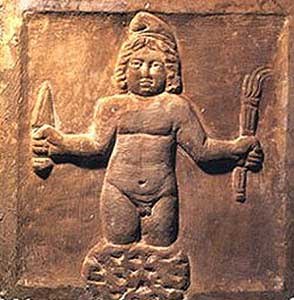 Mithra: According to The Mysteries of Mithras: The Pagan Belief that Shaped the Christian World by Payam Nabarz, “The Persian Mithra was born of the immaculate virgin Mother Goddess Anahita… This birth took place in a cave or grotto, where shepherds attended him and presented him with gifts at the winter solstice. Mithra lived for sixty-four years and then ascended to heaven in 208 B.C.E.”
Mithra: According to The Mysteries of Mithras: The Pagan Belief that Shaped the Christian World by Payam Nabarz, “The Persian Mithra was born of the immaculate virgin Mother Goddess Anahita… This birth took place in a cave or grotto, where shepherds attended him and presented him with gifts at the winter solstice. Mithra lived for sixty-four years and then ascended to heaven in 208 B.C.E.” It should be obvious by now that much of the so-called “similarities” between Jesus, Horus, and Mithra(s) are not really similarities at all, and the rest are simply made up out of whole cloth. False “similarities” are not the only thing wrong with these kinds of claims. In order to develop their argument, proponents of this view rely on fallacious reasoning.
It should be obvious by now that much of the so-called “similarities” between Jesus, Horus, and Mithra(s) are not really similarities at all, and the rest are simply made up out of whole cloth. False “similarities” are not the only thing wrong with these kinds of claims. In order to develop their argument, proponents of this view rely on fallacious reasoning. The so-called parallels between Jesus and earlier myth need a strong foundation in historical source documents as well as an argument free of fallacies, neither of which they possess. Unfortunately, while the weaknesses are such that scholars no longer find this issue plausible, some folks unaware of current scholarship continue to be taken in by this nonsense. However, those looking to think critically should always remember to go back to the historical documents. The answers can usually be found in the homework.
The so-called parallels between Jesus and earlier myth need a strong foundation in historical source documents as well as an argument free of fallacies, neither of which they possess. Unfortunately, while the weaknesses are such that scholars no longer find this issue plausible, some folks unaware of current scholarship continue to be taken in by this nonsense. However, those looking to think critically should always remember to go back to the historical documents. The answers can usually be found in the homework.

